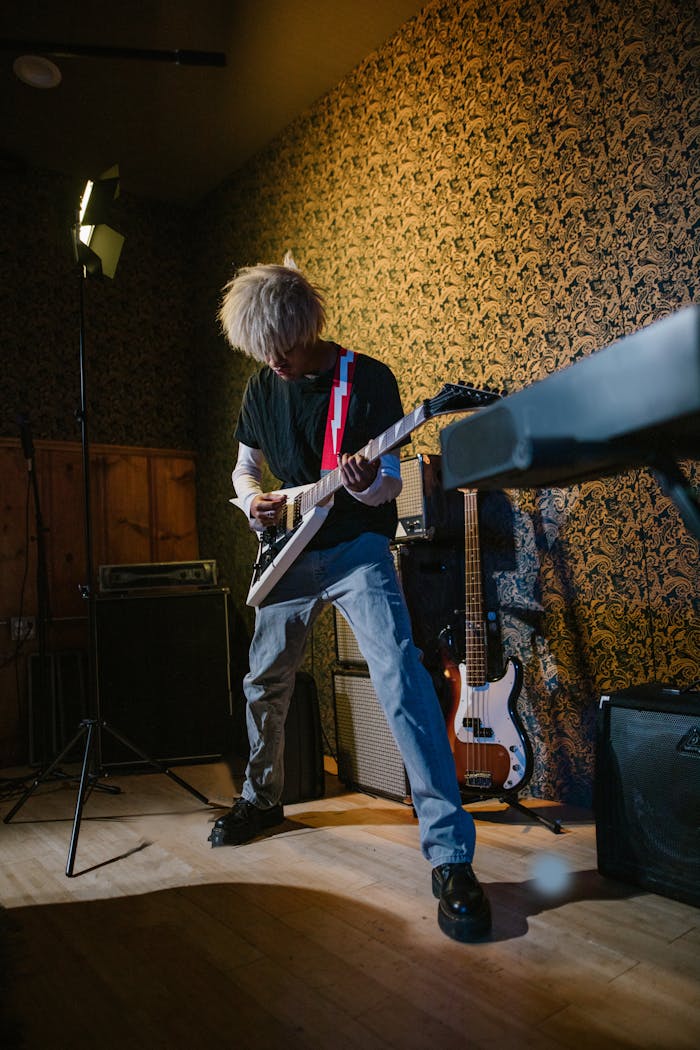Engaging Introductions: Capturing Your Audience’s Interest
The initial impression your blog post makes is crucial, and that’s where your introduction comes into play. Hook your readers with a captivating opening that sparks curiosity or emotion. Address their pain points or questions to establish a connection. Outline the purpose of your post and give a sneak peek into what they can expect. A well-crafted introduction sets the tone for an immersive reading experience.
Crafting Informative and Cohesive Body Content
Introduction
The guitar: an instrument that has serenaded hearts, ignited revolutions, and perhaps most importantly, been the cause of countless teenage bedroom concerts. While the guitar’s history is rich with musical milestones, it’s also sprinkled with moments of sheer absurdity. Join us on a comical journey through the ages as we explore the quirks and quirks of this iconic instrument.
Ancient Strummers: The Guitar’s Early Ancestors
Lute-tastic Times
Long before the electric guitar wailed through stadiums, our ancestors were jamming on the lute. Picture this: a medieval bard, strumming away on a lute, trying to woo a fair maiden. Now, imagine that lute being a fragile, elaborately decorated piece that’s more likely to break a string than break hearts. Yes, romance in the Middle Ages was a delicate affair.
The Vihuela’s Vogue
In 16th century Spain, the vihuela made its grand entrance. This six-course, double-strung guitar-like instrument was the Renaissance equivalent of a double-neck guitar. Only, instead of shredding a face-melting solo, you were more likely to play a delicate, fingerstyle tune that’d make a 21st-century audience politely applaud while sipping on mead.
Baroque and Roll: The Rise of the Classical Guitar
Stradivari’s Strings
The Baroque period brought us the five-course guitar and legends like Antonio Stradivari, famed for his violins but also a notable guitar maker. Stradivari’s guitars were the vintage Gibsons of their time. Imagine a Baroque musician bragging, “This is a Stradivari, handcrafted in 1680. The tone? Simply divine!”
String Snafus
In this era, guitar strings were made of gut (yes, you read that right, animal gut). So, the next time you’re annoyed by a broken string, just be glad you don’t have to re-string with intestines. Gut strings were prone to snapping at the most inconvenient moments, often during a heartfelt serenade. Talk about a mood killer.
The 19th Century: From Parlor to Parody
The Guitar’s Social Climb
The guitar gained popularity in the 19th century, especially in the cozy parlors of the bourgeoisie. These intimate concerts were the Spotify sessions of their day, albeit with more tea and less shuffle play. Guitarists would perform pieces that were either impressively virtuosic or humorously simplistic, depending on the skill of the player and the attention span of the audience.
The Capo Conundrum
Capos, those nifty devices that change the pitch of the strings, became more common. But early capos were about as reliable as a drunk uncle at a wedding. They’d slip mid-performance, sending a carefully tuned piece into a dissonant disaster. Early 19th-century guitarists must have had the patience of saints or the sense of humor of jesters.
The Electric Age: Shocks and Rock
The Birth of the Electric Guitar
Fast forward to the 20th century, and the electric guitar is born. Early models like the “Frying Pan” (yes, that’s its real name) looked more like kitchenware than musical instruments. Imagine trying to be taken seriously on stage with something that resembled your mom’s favorite skillet.
Amplifier Antics
Early amplifiers were temperamental beasts. They’d hum, buzz, and occasionally smoke if you pushed them too hard. Musicians had to be part rocker, part electrician. Many an early rock ‘n’ roll show featured an impromptu pyrotechnic display, courtesy of a short-circuiting amp.
Modern Times: Guitar Heroes and Zeroes
Shredding and Headbanging
Today, guitars are synonymous with rock gods and epic solos. But with great power comes great responsibility, or rather, great potential for embarrassment. From accidentally smashing a prized guitar during an overzealous stage dive to missing a crucial chord in a live performance, modern guitarists have had their fair share of Spinal Tap moments.
The Air Guitar Phenomenon
Let’s not forget the absurdity of the air guitar. Entire championships are dedicated to miming guitar solos with nothing but sheer enthusiasm. It’s the one instrument you can master without ever touching, proving once and for all that sometimes the best instrument is the one you don’t actually have to play.
Conclusion
The guitar’s journey from ancient lute to modern rock legend is filled with humorous mishaps and delightful quirks. It’s a testament to the instrument’s enduring appeal and the human spirit’s ability to laugh through the blunders. So, the next time you pick up a guitar, remember: it’s not just about the music, but also the hilarity along the way. Rock on, and don’t forget to tune those strings!


